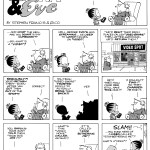World
Why the South African Eurobond issue should inspire confidence

In polar opposition to the latest RMB/BER Business Confidence Index, which has reached a two-decade low, international investors have seemingly taken a very different view on SA’s future economic outlook. Perhaps, on the home front, we are somewhat in need of a more sober global perspective, and a little more self-confidence.
On Monday 23 September 2019, South Africa went into the Eurobond market for the first time since May 2018. Initially expecting to raise $4-billion to fund foreign currency commitments, as detailed in the 2019 National Budget in February, the offering by the government was met with significant demand from foreign investors and was ultimately 2.7 times oversubscribed.
With investor interest from a range of large financial institutions across Europe, North America, Asia, Africa and the Middle East, price talks prior to the sale initially suggested that the 10-year bond would be priced at 5.25%, while the 30-year bond was expected to be priced at 6.125%. This was in line with South Africa’s previous Eurobond sale in 2018, which priced 12-year bonds at 5.875% and 30-year bonds at 6.3%.
The day after the issuance, Treasury announced that the 10-year bond had been priced at 4.85% and the longer-dated 30-year bond had been priced at 5.75% – indicating that investors were willing to accept lower coupon rates than initially suggested, and indeed, lower coupon rates than offered in the previous year’s Eurobond sale.
From the perspective of an international investor, a Eurobond issuance is distinct from foreign bond issuance, as bonds sold on the Eurobond market are denominated in “hard currency”, such as the dollar or the euro, as opposed to being issued in the currency of the country selling the bonds. A Eurobond is thus unique in its ability to delineate a sovereign’s credit risk, as currency-exchange risk is explicitly excluded from the perspective of the investor. Therefore, the coupons on the latest Eurobonds issued essentially reflect the price that investors are willing to accept for South African credit risk when currency risk is removed from the equation.
In total, $5-billion worth of South African Eurobonds were sold, comprising $2-billion of bonds maturing in 2029 and $3-billion of bonds maturing in 2049. National Treasury announced, “The South African government sees the success of the transaction, believed to be the largest ever out of sub-Saharan Africa, as an expression of investor confidence in the country’s sound macro-economic policy framework and prudent fiscal management.”
The success of South Africa’s latest Eurobond issuance stands, however, in sharp contrast to local business confidence, which reached a 20-year low of 21 out of 100 points in the third quarter of 2019, as per the RMB/BER Business Confidence Index (BCI). Similarly, the SA Chamber of Commerce and Industry (Sacci) Business Confidence Index reached a 34-year low in August of 2019, although it experienced a slight uptick in September.
I was struck by this pronounced difference in perspective on South Africa’s economic outlook – the apparent dissonance between the views of local South African business and those of foreign investors. In reading Buttonwood, the financial columnist, in the 7 September 2019 issue of The Economist, whose article was titled “Why yields are the best guide to future stock market returns”, I was further struck by another comparison.
The article pays particular attention to economist John Cochrane’s landmark 2011 speech to the American Financial Association, in which he explains that yield – long seen as an output of the pricing equation – should rather be considered an input. When prices are high and yields are low, he explains, it implies that investors are willing to accept lower returns in the future.
Embedded in the article is a graph that depicts the “United States equity risk premium”, represented by the gap between the earnings yield of the S&P 500 and real five-year Treasury yields over the past two decades. The graph provides substantial insight into what US investors have come to expect from their stock market’s 500 largest companies in terms of earnings yield, with the gap ranging roughly between 3.5%and 5.5% over the past four years.
In comparison to the risk premium of the S&P 500, the South African Eurobonds issued on 23 September 2019, I calculated to be priced with a spread of 479 basis points and 530 basis points over the real yields of the 10-year and 30-year US Treasury bonds respectively – priced on the same day. What this would seem to suggest, in simplified terms, is that international investors are willing to accept roughly the same risk premium for South African Eurobonds as they do for an index of the largest 500 companies listed in the US.
In making such a comparison, one must, of course, recognise that the earnings yield of equities over the past half-decade has become compressed more owing to the over-valuation of the stock market than to the underperformance of the stock market’s earnings. This is particularly relevant in what is recognised as a high price, low yield period for the US stock market at present, with the S&P 500 reaching all-time highs in 2019.
Furthermore, I acknowledge that the S&P 500 earnings yield spread is measured by Buttonwood over the real five-year Treasury yield, whereas my calculations for the South African Eurobond spreads are over the real 10-year and real 30-year Treasury yields respectively. The difference, however, between the real five-year Treasury yield and real 30-year Treasury yield for 23 September was just 32 basis points.
Finally, although I acknowledge that South African-issued Eurobond debt sits in a completely different asset class to the S&P 500 index, I would still argue that the comparison is legitimate. After all, the basic principles of finance persist – investors will always require returns to compensate them for the degree of risk they are taking. In this case, it would appear that – irrespective of asset class – foreign investors require roughly the same compensation for the risk associated with investing in South African Eurobond debt as they do for the risk associated with investing in the US equity market.
What this suggests is that international investors have taken a positive view on South Africa’s credit risk, since the Eurobond explicitly eliminates the currency-exchange risk for the buyer of the bond. In this respect, unlike Greece, Brazil, Venezuela, Russia, the Ukraine, Nigeria or Argentina, which have each defaulted or required bailouts on their national debts in the last 20 years – and some of them multiple times – South Africa has not defaulted on its sovereign debt since 1985, when a debt standstill occurred, following a speech by the then president, PW Botha, that resulted in banks refusing to roll over short-term foreign debt.
In polar opposition to the result of the latest RMB/BER Business Confidence Index, which has reached a two-decade low, international investors have seemingly taken a very different view on South Africa’s future economic outlook. It would appear that South African business is far less confident in itself than foreign investors are. Perhaps, on the home front, we are somewhat in need of a more sober global perspective, and a little more self-confidence.
David Buckham is CEO of Monocle, an independent, specialist consulting firm focused on finance, treasury, risk, and compliance.



















 Become an Insider
Become an Insider